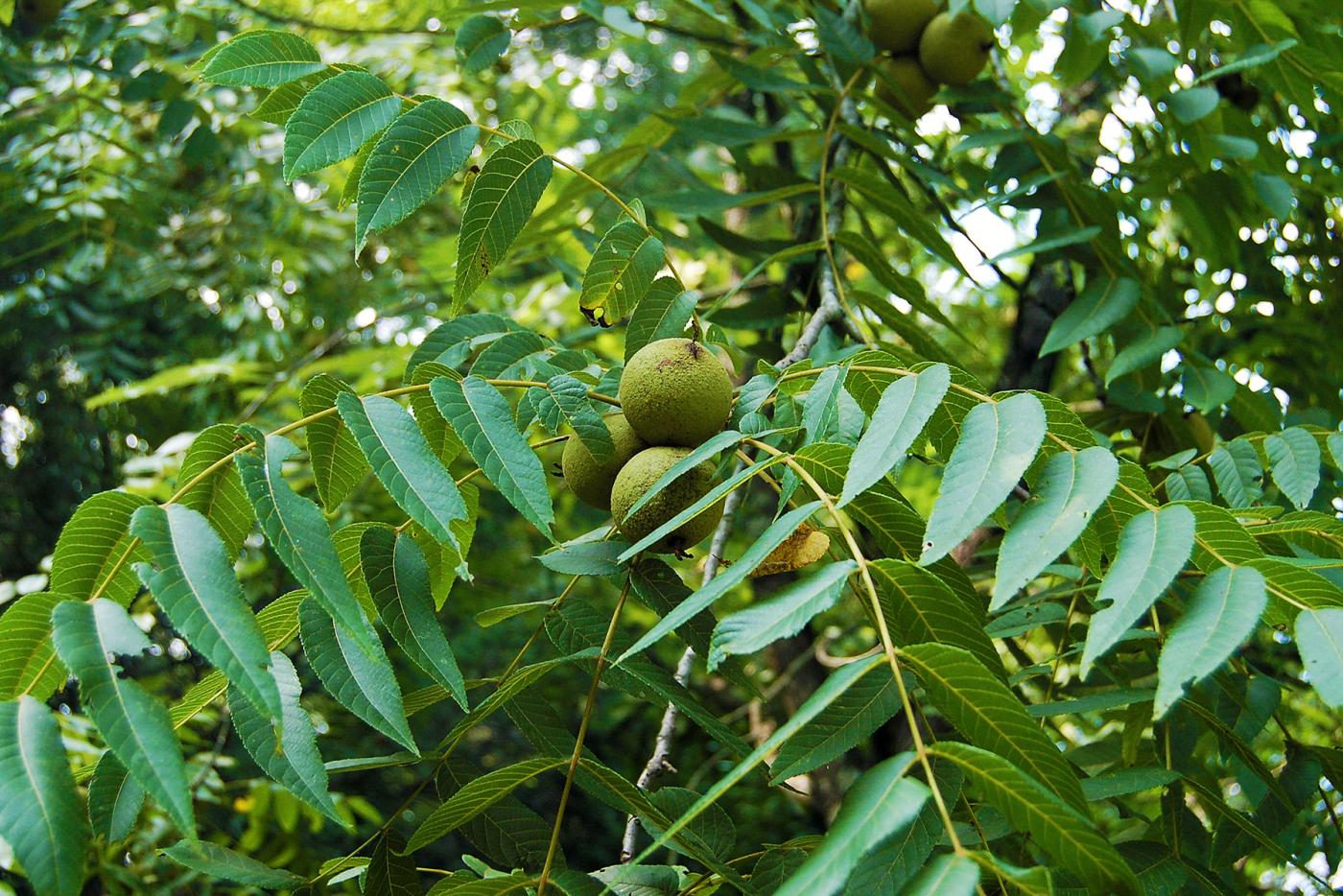| Scientific name | Juglans nigra |
|---|---|
| Common name | Black walnut |
Top photo by J. Mickey at Stone Mountain State Park
About This Tree
The black walnut is a native tree found throughout the central United States. It grows from New Jersey to Alabama and west to eastern Kansas and Oklahoma. In North Carolina, the black walnut is widespread throughout the state. It can be found along the edges of forests, streams, and the lower parts of slopes that face to the north and east. The black walnut is a hardy tree and grows well in areas with moderate temperatures, although it has been found with temperatures as low as minus 45 F! The black walnut requires a lot of rain and grows best where it can get about 35 inches each year.

Black walnut trees that have spent years growing in good soil with plenty of sun will routinely reach 70 to 100 feet tall. Some trees in Wisconsin and Indiana have been measured at 150 feet or taller. Young black walnut saplings start their growth with a single deep root, but later in their life start to grow a shallower, spreading root system like the maple tree. It is the combination of a deep root (called a taproot) and the shallower roots that gives the black walnut the ability to do well in both dry and wet conditions.
Black walnut trees have the unusual ability to make a substance called Juglone. Black walnut trees use it for protection from harmful insects and competition from other plants and trees. Juglone can also affect some of our common garden plants. Tomatoes, potatoes, and cabbage may have problems growing if planted within 50 feet of the trunk of a black walnut tree.

It takes a long time for black walnut trees to start to grow fruit, and it isn't like the walnuts you can buy in a store. Black walnut trees may start to produce nuts within 4 to 6 years, but it is normal for them to take up to 20 years. This is one of the reasons black walnut trees are not grown commercially, because it would take many years before you could get the trees to produce enough nuts to sell. In the wild, animals like turkeys, squirrels, raccoons, and mice eat the ripe nuts. In the fall, as the animals gather food to prepare for winter, they may store black walnuts by stashing them in a few inches of dirt and leaves. The next year, if the nuts haven't been eaten, they may take root and grow, which helps the black walnut spread.
Visitor Tip
To find black walnut trees in the park, look along the edges of the trails and you may find the nuts or pieces of the large green protective outer shell called a husk, left over from the ripe nut. Often, the best indicator of a walnut tree growing nearby is seeing the old, dried out brown husks littering the ground as you walk trails and roadsides. Remember: take only pictures and leave only footprints. Disturbing, picking, foraging, or removing anything goes against park rules and regulations. Enjoy the beauty and allow those after you to do the same!

